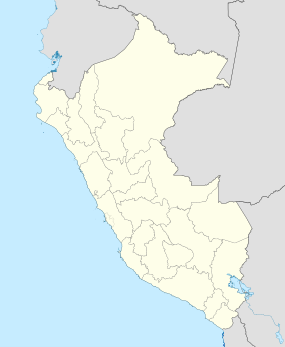Patallaqta

Patallaqta viewed from above on the Inca trail near Willkaraqay
|
|
| Location | Peru, Cusco Region, Urubamba Province, Machupicchu District |
|---|---|
| Region | Andes |
| Coordinates | 13°13′53″S 72°25′53″W / 13.23139°S 72.43139°WCoordinates: 13°13′53″S 72°25′53″W / 13.23139°S 72.43139°W |
| Type | Settlement |
| History | |
| Cultures | Inca |
Patallaqta (Quechua pata elevated place / above, at the top / edge, bank (of a river), shore, llaqta place (village, town, city, country, nation), "settlement on a platform" pronounced "pahta-yakta", hispanicized spelling Patallacta), Llaqtapata (Llactapata) or Q'inti Marka (Quechua q'inti hummingbird, marka village, "hummingbird village", also spelled 'Q'ente Marka') is an archaeological site in Peru located in the Cusco Region, Urubamba Province, Machupicchu District. It is situated southeast of the site Machu Picchu, at the confluence of the rivers Kusichaka and Willkanuta on a mountain named Patallaqta.
On his way to discover Machu Picchu (at: 13°13′57″S 72°25′30″W / 13.2325095°S 72.424922°W) Hiram Bingham, discoverer of Machu Picchu and many other Incan sites, passed Patallaqta, sometimes given the name of Llaqtapata as evidenced by the photograph of a sign from a check-point along the Inca trail. His associate Mr. Herman Tucker reported that the name of the town was Patallacta containing about one hundred houses. Above it were several important sites including Wayllapampa. This site is located 1.5 km (1 mi) from the start of the "Classic Inca Trail" which begins at Km 88.
This site housed a large number of occupants, including travellers and soldiers who manned the nearby "hill fort" of Willkaraqay, and a shrine with rounded walls known as Pulpituyuq that had religious and ceremonial functions.
...
Wikipedia

